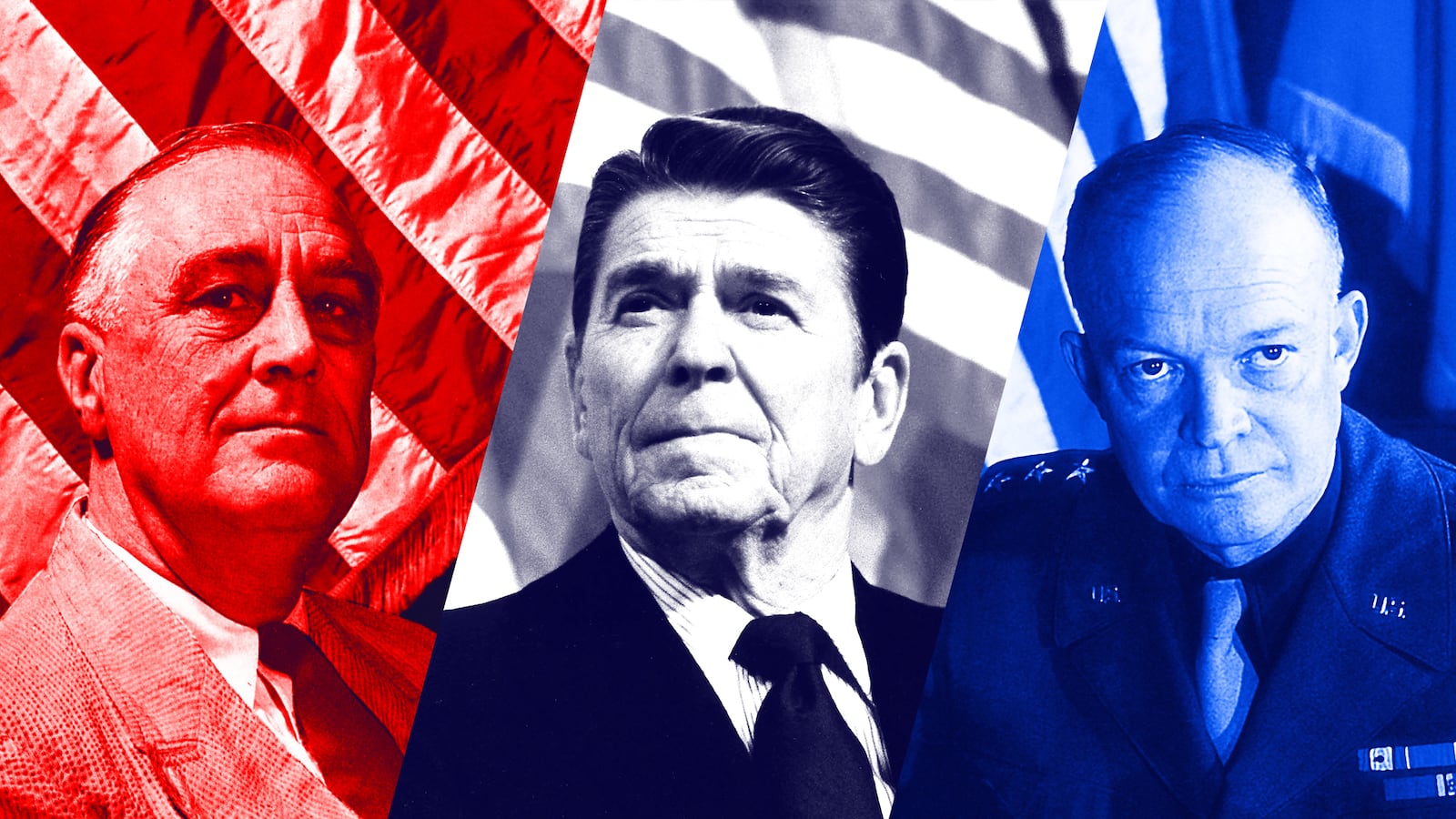They are the three American political giants; the only three 20th Century candidates who won two consecutive landslide Presidential elections; three whose triumphs are seen now as the inevitable victories of larger-than-life figures riding powerful historical trends.
And each of them came very close to never being President at all—a piece of history to remember as we read of the “inevitable” forces driving the 2016 campaign.
Franklin D. Roosevelt won the White House in 1932 carrying 43 states, with an 18-point popular vote margin, and 472 electoral votes. His 1936 reelection was even more overwhelming—46 states and a 25 point popular vote margin.
But back in 1928, FDR’s political prospects were very different. He’d reluctantly agreed to run for Governor of New York fearing that Democratic nominee Al Smith would lose the state—and the nation—to Herbert Hoover. There was also the matter of his health; contrary to what many now believe, the press raised persistent questions about whether the polio-stricken Roosevelt was up to the rigors of a campaign.
On Election Night, returns showed that Smith was losing New York by 100,000 votes—and FDR was trailing his Republican opponent. Only a late surge of Democratic votes—aided, political legend says, by the creative vote counting of Bronx Democratic boss Ed Flynn—gave Roosevelt a 25,000 vote win, a margin of one half of one percent of the vote. Had Roosevelt lost, his political career would have gone into eclipse, making the prospects for a Presidential nomination in 1932 highly unlikely.
Twenty years after Roosevelt’s first triumph, Dwight Eisenhower rode his military credentials—the Supreme Commander of Allied Forces in Europe—to an 11-point, 4l state, 442 electoral vote landslide. “Of course,” we say now. “How could anyone successfully oppose the man who symbolized the World War II triumph?
In fact, that’s what the base of the Republican Party come very close to doing. The midwest, small-town conservative wing of the party had seen the Eastern internationalist wing of the party reject Ohio Senator Robert Taft three times; the last two times in favor of New York Governor Tom Dewey. By 1952, the Taft forces were in solid control of the convention, and seemed determined to finally deliver the nomination to their hero. Their clout was demonstrated when three crucial delegate credential fights were resolved in favor of Taft.
Instead, Eisenhower’s backers—who included such then-highly influential media outlets as the New York Herald Tribune, and Time and Life Magazines— launched a floor challenge, and reached out to Republicans watching the battle on the newly powerful medium of television. Telegrams and calls flooded the convention…and the delegates voted narrowly to seat Eisenhower’s delegates. The most memorable part of the fight was an impassioned speech by Taft backer Sen. Ev Dirksen of Illinois, who pointed to Tom Dewey and intoned “we followed you before, and you took us down the road to defeat!” (You can see Dirksen’s entire speech here; a reminder of what it was like when conventions actually picked a nominee) Yes, it seems almost unimaginable that one of the most popular vote-getters ever came within a few dozen delegates of losing a nomination. But it’s exactly what happened.
Ike’s record as a top GOP Presidential victor was eclipsed by Ronald Reagan—after a 10 point, 44 state, 489 electoral vote win in 1980, he bettered that four years later by winning 49 states and 525 electoral votes and racking up an 18 point popular vote win.
But this impressive result might never have happened at all—were it not for the fact that Gerald Ford narrowly lost his fight for a full term back in 1976. How close did Ford come? While he lost the popular vote by 1.7 million votes, the Electoral College outcome was far, far closer. A shift of 6,000 votes in Ohio and 8,000 in Mississippi would have kept Ford in the White House.
And then? I’ve sketched what I believe is a highly plausible scenario in a book of alternate histories. The key is that, had Ford been re-elected, Reagan—or any Republican in 1980—would not have been running against a highly unpopular Democratic President. He would have been running to succeed a lame duck Republican, who would very likely have been struggling with the economic same gloomy economic conditions as Carter faced.
Moreover, a President Ford in 1980 would not have forgotten Reagan’s near-successful challenge to his nomination in 1976 (In fact, Ford came close to challenging Reagan in 1980, and was convinced that the intra-party fight cost him the White House). In purely political terms, the best thing that ever happened to Reagan was Jimmy Carter’s very narrow victory.
There’s a lesson to be drawn from this history. If three of the most dominant political figures of the last century all came perilously close to political defeat, it should remind us to take a “determinist” approach to politics—“this is what will happen, this is what can’t happen”—with several pounds of salt. Time after time, the outcome of political battles can be summed up the way the Duke of Wellington said of the Battle of Waterloo: “It was a near run thing. The nearest run thing you ever saw in your life.”





